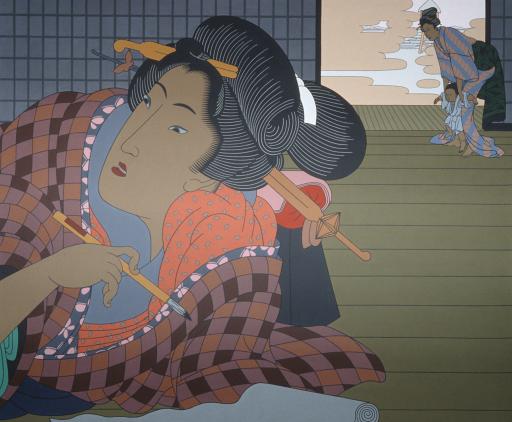Diary, Roger Shimomura
Artwork Overview
Roger Shimomura, artist
born 1939
Diary,
1978
Portfolio/Series title: Minidoka Series #3
Where object was made: United States
Material/technique: acrylic; canvas
Dimensions:
Canvas/Support (Height x Width x Depth): 152.1 x 183 cm
Canvas/Support (Height x Width x Depth): 59 7/8 x 72 1/16 in
Frame Dimensions (Height x Width x Depth): 61 7/8 x 73 1/4 in
Canvas/Support (Height x Width x Depth): 152.1 x 183 cm
Canvas/Support (Height x Width x Depth): 59 7/8 x 72 1/16 in
Frame Dimensions (Height x Width x Depth): 61 7/8 x 73 1/4 in
Credit line: Museum purchase
Accession number: 1979.0051
Not on display
If you wish to reproduce this image, please submit an image request



















